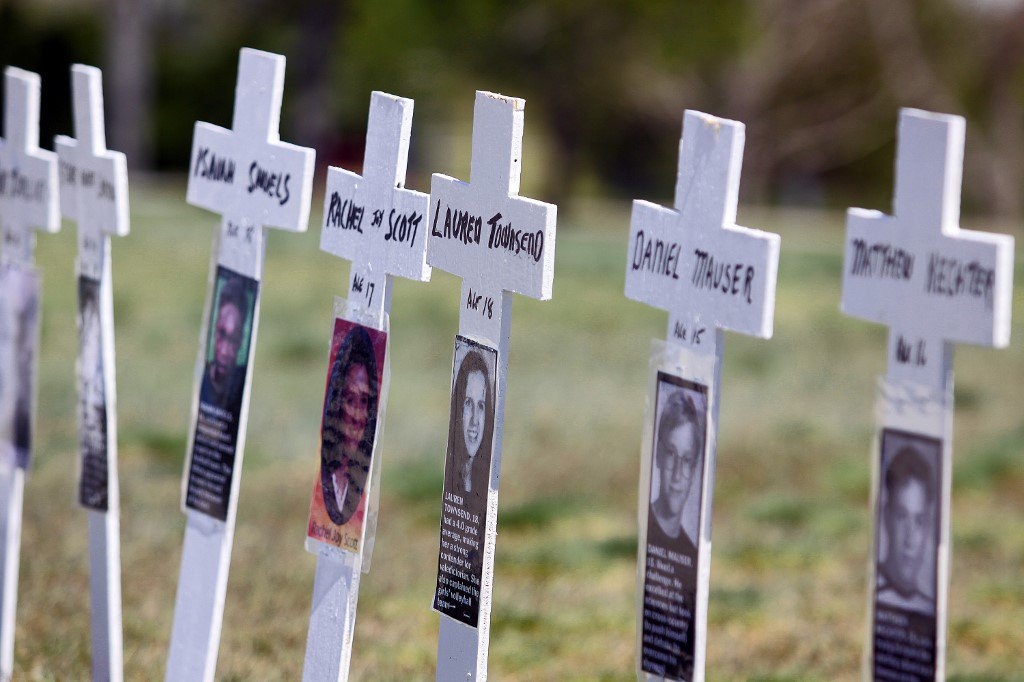UN report: 464,000 people killed in homicides in 2017

Some 464,000 homicides were recorded around the world in 2017, far more than the number pf people killed in armed conflicts and terrorist attacks, a U.N. report said Monday.
The Global Study on Homicide 2919 published Monday said the region with highest number of homicide victims was the Americas.
But the report from the U.N. Office on Drugs and Crime also had some good news. While the total number of people who suffered violent deaths has increased over 25 years, the global population has grown faster, so the risk of being killed in a homicide has declined. There were 7.2 homicides per 100,000 people in 1972, but by 2017 that had declined to 6.1 victims per 100,000 people.
Yury Fedotov, executive director of the Vienna-based U.N. office, said the study "seeks to shed light on gender-related killings, lethal gang violence and other challenges, to support prevention and interventions to bring down homicide rates."
The study highlights such drivers of homicide as inequality, unemployment, political instability, gender stereotypes and organized crime. It also points to the importance of countries following the rule of law, tackling corruption and promoting economic development and education to bring down violent crime.
According to the study, the 464,000 victims of homicides compares to 89,000 killed in armed conflicts and 26,000 who died in terrorist violence in 2017.
Between 2015 and 2017, the total number of homicide victims worldwide increased 4 percent, or around 19,000, it said. The office warned that if this trend continues, the U.N. goal of reducing all forms of violence and death rates by 2030 will not be met.
The study said organized crime is responsible for 19 percent of global homicides. It said an average of roughly 65,000 killings every year were related to organized crime and gangs during the 2000-2017 period.
"Countries in the Americas reported 173,000 victims of intentional homicide — 37 percent of the global total (in 2017) in a region that accounts for only 13 percent of the world's population," the report said. "The homicide rate of 17.2 victims per 100,000 population in the Americas was the highest recorded in the region since reliable records began in 1990."
The only other region with a homicide rate in 2017 exceeding the global average was Africa, with 13.0 victims per 100,000 people, or a total of 163,000 victims, it said.
By contrast, Europe's rate was 3.0 per 100,000, with 22,000 homicide victims, while Asia, with 60 percent of the world's people, had the lowest regional rate — 2.3 per 100,000 people or 104,000 victims.
According to the study, "shooting has long been the most common cause of death in homicide cases worldwide." In 2017, it said, slightly more than half the homicides were a result of firearms, while only 20 percent involved sharp objects.
"In the Americas, firearms were involved in roughly three-quarters of homicides in 2017, which accounted for more than one quarter of the homicides worldwide that year," the report said.
Globally, some 81 percent of homicide victims in 2017 were men and boys, and more than 90 percent of suspects in homicide cases were male, the study said.
For women, it said, "the home remains the most dangerous place." Some 87,000 women and girls were slain in 2017, which was a decrease from 2012, but the percentage killed by intimate partners or other family members rose from 47 percent of all female homicide victims in 2012 to 58 percent in 2017, the report said.
